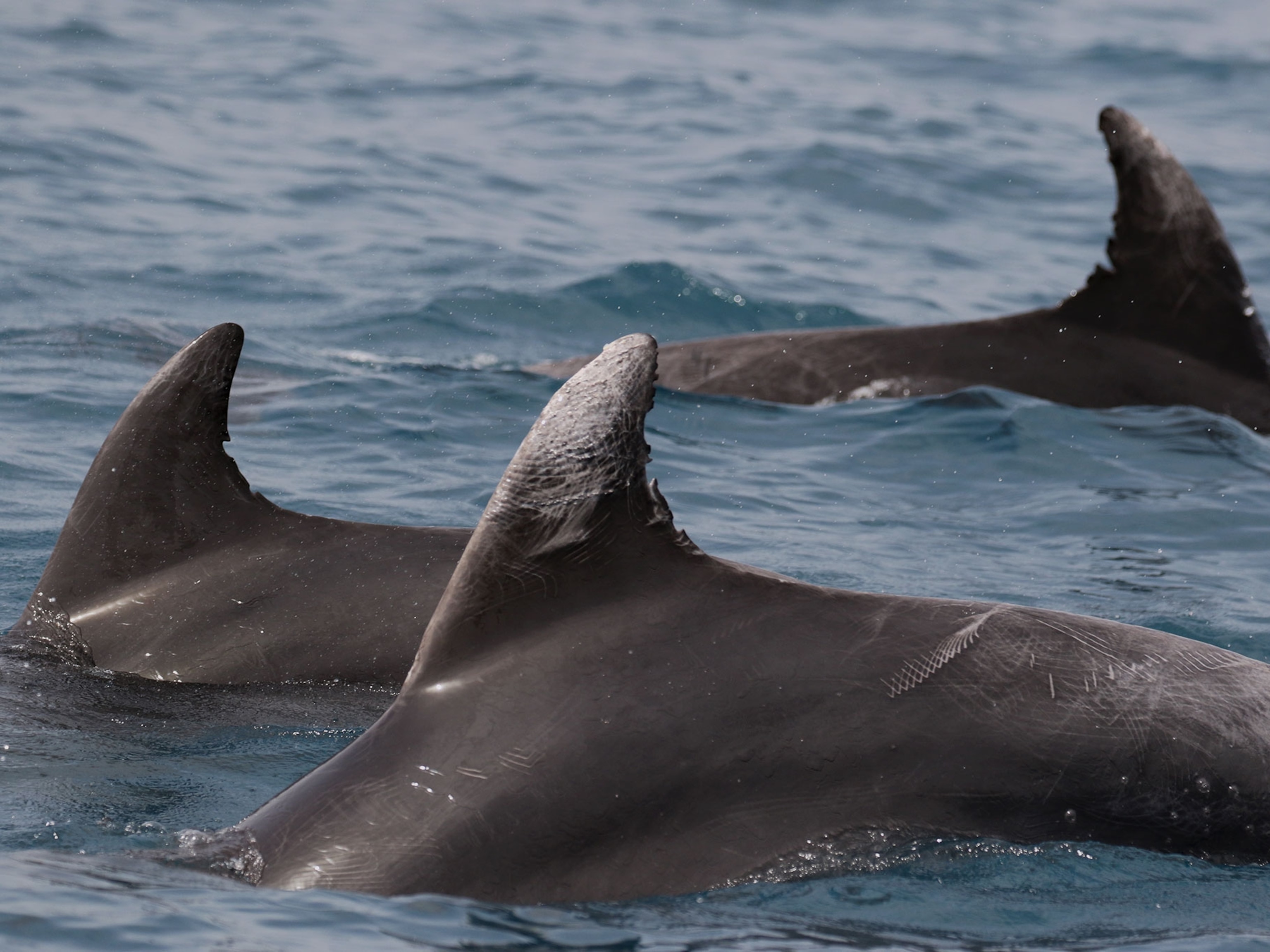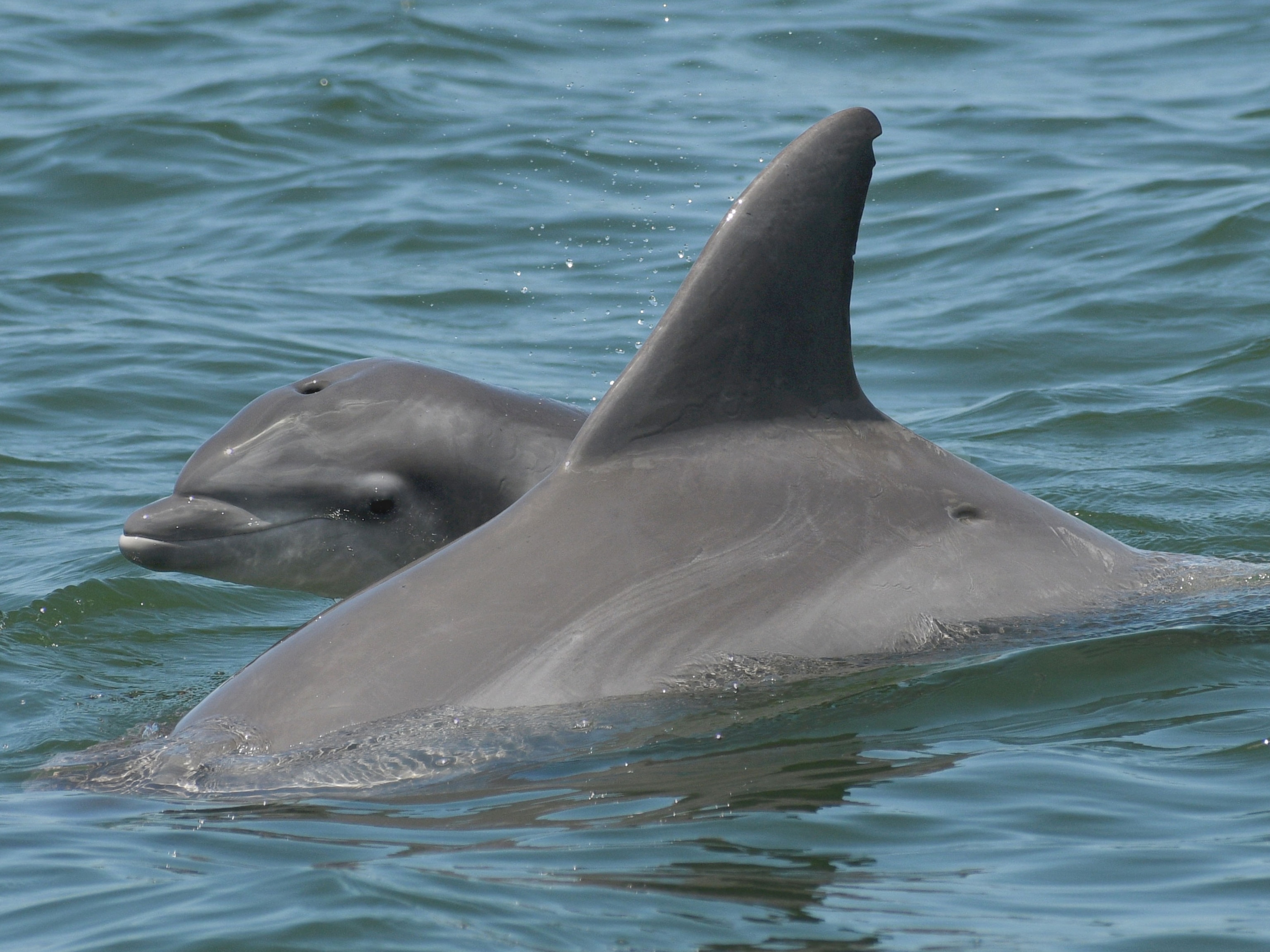
Dolphins Turn Diabetes Off and On -- Hope for Humans?
Evolutionary adaptation may mirror Ice Age mutation in humans.
Bottlenose dolphins have what could be called type 2 diabetes, but unlike humans, the animals are able to turn it off and on—perhaps an evolutionary adaptation to maintain their big brains, new research suggests.
Diabetes may have arisen in Ice Age humans for similar reasons, so the newfound dolphin on-off switch may be a key to curing type 2 diabetes in people.
Like humans, dolphins have relatively large brains compared to their body sizes—in fact, dolphins are second only to humans in the ratio between body and brain size. (Related: "Brain Region for Overcoming Fear, Anxiety Found.")
Scientists know that humans need plenty of a sugar called glucose to keep their brains functioning. Some researchers think the same might be true for dolphins, since both species send high amounts of glucose through their bloodstreams.
Dolphins, however, primarily eat fish, which are high in protein and low in sugar. To get enough glucose from this diet, dolphins have evolved a mostly harmless form of insulin resistance, according to Stephanie Venn-Watson, director of clinical research for the U.S. nonprofit National Marine Mammal Foundation.
Insulin is a hormone that helps the body turn blood sugar into energy. People with type 2 diabetes either don't make enough insulin or are resistant to its effects. Without insulin to break down glucose, too much sugar builds up in the blood, leading to complications such as glaucoma, nerve damage, arterial disease, and kidney failure.
But unlike people, dolphins can activate their diabetes only when the animals need it—and without the serious side effects, Venn-Watson said. Dolphin diabetes "turns on during their short overnight fast and turns off when they have breakfast in the morning," she said.
Not all experts, however, are convinced that dolphins use blood sugar in the same ways that humans do. Even though both species are mammals, dolphins and people have very different metabolisms, noted Lori Marino, a neuroscientist and behavioral biologist who specializes in bottlenose dolphins at Emory University in Georgia and was not involved in the foundation's research.
"Dolphins have a layer of blubber, for example, but humans don't. That shows we have very different ways of storing energy," Marino said. "Whether dolphins have the same energy requirements we do is doubtful."
Don't Feed the Dolphins Twinkies
The link between dolphins and diabetics first surfaced several years ago, when researchers at the National Marine Mammal Foundation began analyzing data from U.S. Navy studies done in the 1970s.
Those studies used blood and urine samples taken from captive bottlenose dolphins and examined changes in blood chemistry due to high-sugar versus high-protein diets.
The data showed that dolphins that were fed sugar developed long-lasting high glucose levels that mimic those seen in people with diabetes.
"If we started feeding dolphins Twinkies, they would develop type 2 diabetes," the foundation's Venn-Watson said Thursday at a meeting of the American Association for the Advancement of Science in San Diego, California.
In recent experiments, Venn-Watson's team found that dolphins that fast overnight experience changes in their blood chemistries like the fluctuations seen in human diabetics. But the dolphins go back to healthy blood sugar levels after they eat.
Ice Age Connection?
Most recently, the foundation's preliminary data has shown that some dolphins can develop harmful side effects from having too much insulin, such as kidney stones and a form of iron overload in the blood called hemochromatosis.
Hemochromatosis has been linked to insulin resistance in humans, and its symptoms can include everything from arthritis to liver cancer.
For the most part, however, dolphins seem to be able to control their diabetes-like condition to maintain healthy blood-sugar levels.
Venn-Watson pointed out that previous research had proposed a similar evolutionary event in humans: During the Ice Age, sugar-rich foods such as fruits became scarce in cold regions, so humans switched to a high-protein diet. Diabetes may have developed as a way for these early humans to cope.
Captive Dolphin Data Unreliable?
The combined evidence suggests to Venn-Watson and her colleagues that dolphins could be used as guinea pigs, broadly speaking, in the search for a cure for type 2 diabetes in humans.
Venn-Watson's team is now reaching out to diabetes researchers to help determine whether dolphins will in fact be good stand-ins for diabetic patients.
Marino, the brain expert, remains dubious.
"In a general way our brains are very much alike," Marino said. "They're highly differentiated with a big neocortex"—the region of the brain associated with higher thought. (Related: "Dolphin Moms Teach Daughters to Use Tools.")
Still, there are vast differences among dolphin and human brain structures and nervous systems, which would make the marine mammals unlikely models for clinical trials, she said.
Marino and her colleagues are instead tying together a recent explosion of imaging data on dolphin brains to try and change how the marine mammals are treated.
"We want to talk about the implications of things like drive hunts"—herding dolphins into coves for slaughter—"and the effects of captivity," she said.
Those discussions would include a careful look at the reliability of data from captive dolphins, such as those used in the National Marine Mammal Foundation's original 1970s data and in the recent research highlighted at yesterday's meeting.
(Related: "Cove Movie Seeks to End Japan's Dolphin Hunt.")
"You're talking about dolphins under high amounts of stress," she said. "There're questions about how good data on physiological processes affected by stress from captive animals can be."
Though their recent findings relied on captive dolphins, Venn-Watson emphasized that her team would not encourage any pharmaceutical researchers to use live dolphins in the lab.
Instead, researchers could search the dolphin genome, which has been sequenced, for clues to the diabetic switch and compare the findings to observations of human genes.







